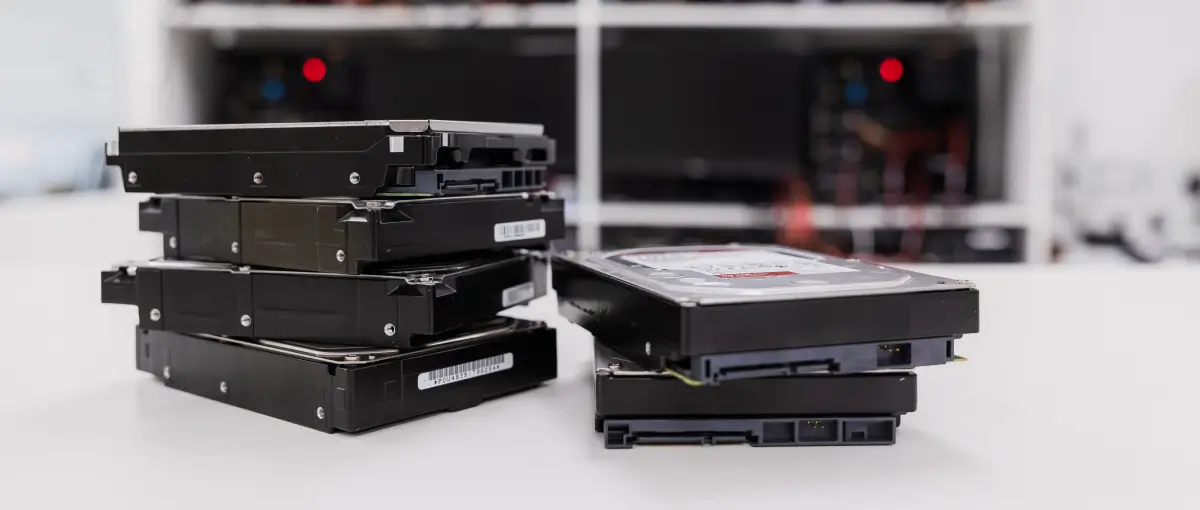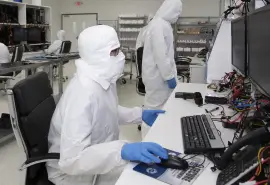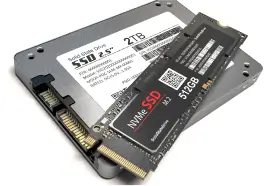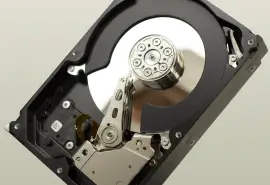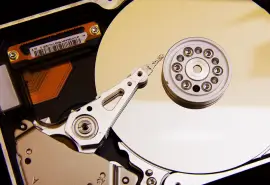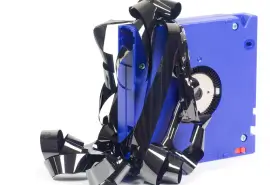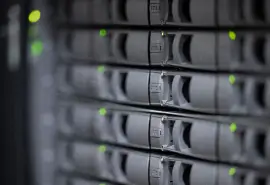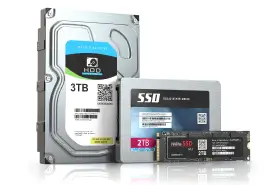Hard disk drives (HDDs) no longer get the same buzz as the latest solid-state drives (SSDs). However, there are still plenty of reasons to own a hard drive in 2025. Despite their blazing speeds, SSDs continue to have a much higher cost per terabyte (TB). In addition, many motherboards have a limited number of M.2 slots for the fastest NVMe SSDs.
Hard drives offer more storage space than SSDs and acceptable performance for specific tasks. HDDs are a smart choice for businesses and home users who need bulk storage for archives, backups, or media libraries. Spinning disks can fill a role at a fraction of the price of high-end SSDs.
Read below for our best hard drives of 2025 across a half-dozen categories.
Quick Shopping Tips for Internal Hard Drives
Pay attention to these factors when searching for a new hard drive for your PC or storage system:
Storage Capacity: The hallmark of hard drives. HDDs are an excellent option for storing massive amounts of data. Determine your required storage space before making a purchase. Check the capacity of your current drive(s) and list any files or programs you want to add. It is also helpful to forecast growth, such as more storage for movies and TV shows or a larger portfolio of projects.
Cache Size: A metric that improves the disk’s performance under sustained workloads. The cache is typically a small amount of dynamic random-access memory (DRAM) built onto the HDD’s circuit board. It boosts read/write speeds by holding blocks of data in a buffer, rather than retrieving it from the platters each time. A larger cache size means increased throughput by storing more prefetched data.
Specialized Features: Some drives have hardware and firmware tailored to specific situations. For example, hard drives in NAS devices and surveillance systems are optimized for RAID setups or constant use. Features like full-disk encryption (FDE), secure erasure, and write protection are also relevant.
RPM: A measure of a disk’s revolutions per minute. Higher RPMs will deliver better performance when seeking data on the platters. Hard drives that spin at 7200 RPM do produce more noise than 5400 RPM models.
Form Factor: A set of specs that describes the size and shape of a device. Internal hard drives are frequently 3.5 inches to fit inside the bays of most PCs and appliances. Confirm the dimensions of your chassis before buying a hard drive.
Warranty: A multi-year guarantee can swing the decision between similar models. Established companies are more likely to back their products with longer warranties than lesser-known brands.
Weighing each of these factors along with price tags often leads to the perfect choice for consumers.
Best Hard Drives
Hard drives will not break any read/write speed records, but they still excel in certain situations. A spinning disk may be what you want if you need to store large files or archive older data.
Here are our best HDDs in the following categories:
- Best HDD for Desktop PC
- Best HDD for Long-Term Storage
- Best HDD for Network-Attached Storage (NAS)
- Best HDD for Direct-Attached Storage (DAS)
- Best HDD for Media Server
- Best HDD for Surveillance Systems
Best HDD for Desktop PC: Toshiba X300 PRO
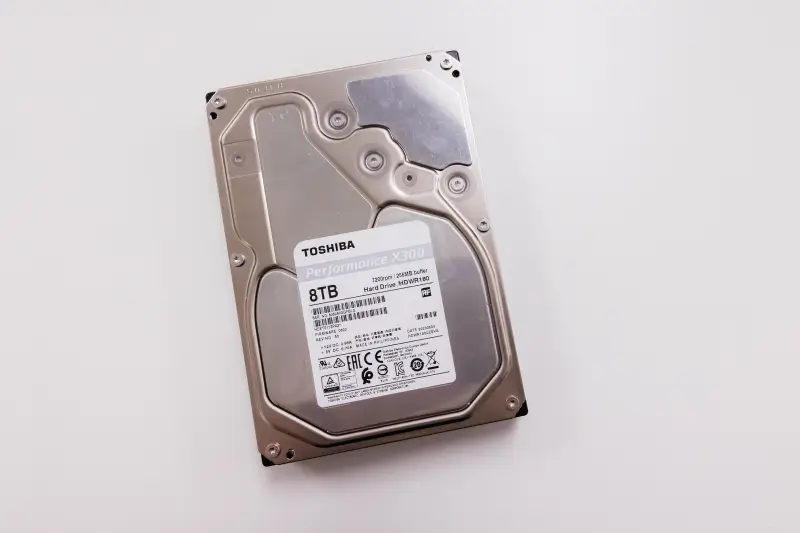
| AT A GLANCE: Toshiba X300 PRO | |
|---|---|
| Form Factor | 3.5-inch |
| Capacities | 4 TB, 6 TB, 8 TB, 10 TB, 12 TB, 14 TB, 16 TB, 18 TB, 20 TB, 22 TB |
| Cache Size | 512 MB |
| Interface | SATA III |
| RPM | 7200 |
| Warranty | 5-Year Limited |
| Pros |
|
| Cons |
|
Why We Recommend It:
The Toshiba X300 PRO provides solid performance and ample storage space for desktops or workstations with an HDD as the main drive. Its sizable 512 MB cache helps with intense input/output requests and random access patterns. In addition, the X300 PRO uses conventional magnetic recording (CMR) across the whole line of disks. Choosing models with CMR avoids the performance and reliability concerns linked to shingled magnetic recording (SMR).
The X300 PRO is slightly more expensive than some high-end hard drives. However, we believe the price is still fair, given its capacities, cache, and five-year warranty.
Best HDD for Long-Term Storage: WD Black
| AT A GLANCE: WD Black | |
|---|---|
| Form Factor | 3.5-inch |
| Capacities | 500 GB, 2 TB, 4 TB, 6 TB, 8 TB, 10 TB |
| Cache Size | 64 MB, 256 MB |
| Interface | SATA III |
| RPM | 7200 |
| Warranty | 5-Year Limited |
| Pros |
|
| Cons |
|
Why We Recommend It:
The WD Black is Western Digital’s answer to people looking for the best hard drive for gaming. While we would not suggest it for that purpose, the WD Black excels as a secondary device for long-term storage. The disk is less expensive than hard drives designed for workstations, but it offers good performance for an HDD. Its sequential read/write speeds are fine for large file transfers and lighter workloads. Home users still benefit from the WD Black by storing more videos, photos, and music, or bigger game archives. Especially in places with inconsistent high-speed internet.
We do recommend grabbing a 4 TB model or larger for the 256 MB cache.
Alternate Choice: WD Blue
The WD Blue is another option for people who are more interested in raw storage than any performance metrics. These disks often represent the most affordable method of increasing total storage space, but lack the warranties of other drives.
Best HDD for NAS Devices: Seagate IronWolf Pro
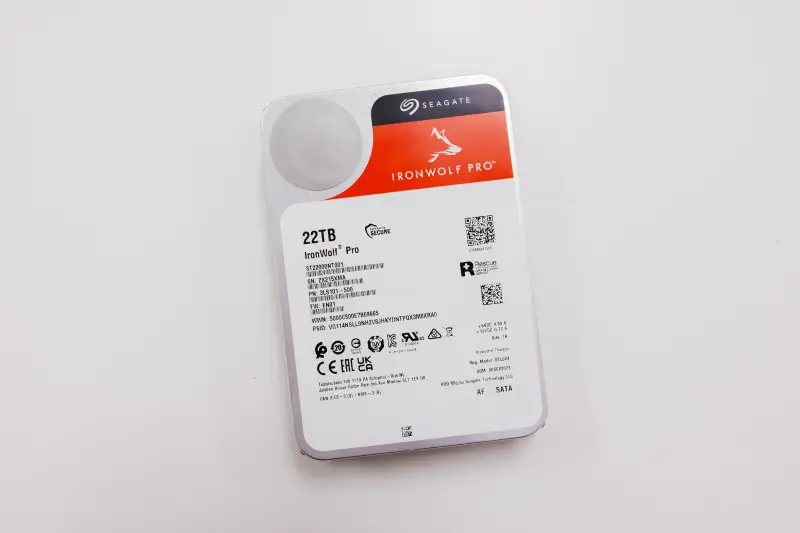
| AT A GLANCE: Seagate IronWolf Pro | |
|---|---|
| Form Factor | 3.5-inch |
| Capacities | 2 TB, 4 TB, 6 TB, 8 TB, 10 TB, 12 TB, 14 TB, 16 TB, 18 TB, 20 TB, 22 TB, 24 TB |
| Cache Size | 256 MB, 512 MB |
| Interface | SATA III |
| RPM | 7200 |
| Warranty | 5-Year Limited |
| Pros |
|
| Cons |
|
Why We Recommend It:
Hard drives inside a NAS device are in continuous use. Seagate built the IronWolf Pro to thrive in multi-drive environments and homelabs. The series is configured with firmware for reliable RAID performance over long periods. Disks are also equipped with vibration sensors to protect platters from scratches. These features and quality materials help the IronWolf Pro earn the best workload rate among HDDs for NAS devices. The model is rated to read or write an impressive 550 TB of data per year.
As a bonus, Seagate’s warranty includes coverage for data recovery services for three years in case of hard drive failure.
Alternate Choice: WD Red Pro
The WD Red Pro has a larger cache than most IronWolf Pro models, but comes with a more modest workload rate limit. Still, it is a good drive if throughput is your top concern.
Best HDD for DAS Devices: WD Ultrastar DC
| AT A GLANCE: WD Ultrastar DC | |
|---|---|
| Form Factor | 3.5-inch |
| Capacities | 1 TB, 2 TB, 4 TB, 6 TB, 8 TB, 10 TB, 12 TB, 14 TB, 16 TB, 18 TB, 20 TB, 22 TB, 24 TB, 26 TB |
| Cache Size | 128 MB, 256 MB, 512 MB |
| Interface | SATA III, SAS-3 |
| RPM | 7200 |
| Warranty | 5-Year Limited |
| Pros |
|
| Cons |
|
Why We Recommend It:
A WD Ultrastar DC disk inside a G-DRIVE PROJECT is a solid DAS solution for most small businesses, content creators, or home users. For starters, the WD Ultrastar DC is an enterprise hard drive that provides excellent performance at high capacities. Those benefits are not limited to data centers. In addition, the G-DRIVE PROJECT has an expansion slot for a PRO-BLADE SSD. Pairing the WD Ultrastar DC with an NVMe SSD makes editing or offloading large files even quicker. There are even enclosures from other brands with multiple M.2 slots for tiered storage, but the hardware will cost you.
The single disk in a G-DRIVE PROJECT is intended for Macs. However, users can reformat the file system for Windows PCs.
Best HDD for Media Server: WD Red Plus
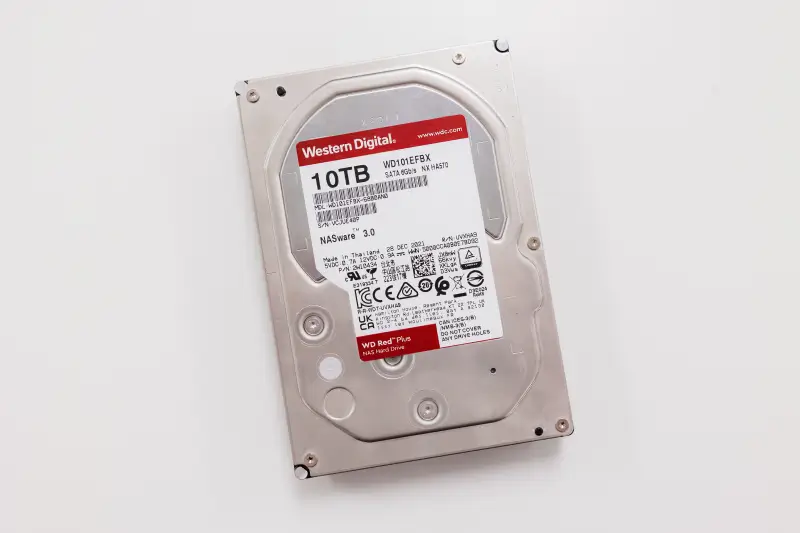
| AT A GLANCE: WD Red Plus | |
|---|---|
| Form Factor | 3.5-inch |
| Capacities | 2 TB, 3 TB, 4 TB, 6 TB, 8 TB, 10 TB, 12 TB |
| Cache Size | 64 MB, 128 MB, 256 MB, 512 MB |
| Interface | SATA III |
| RPM | 5400, 5640, 7200 |
| Warranty | 3-Year Limited |
| Pros |
|
| Cons |
|
Why We Recommend It:
The rise of media servers has led people to seek affordable HDDs with the storage space and performance needed for streaming. The WD Red Plus is a durable disk with sufficient capacities and speeds for an extensive catalog of 4K movies and TV shows. In addition, WD Red Plus models with less than 10 TB of space spin slower than 7200 RPM drives. Reduced noise level can make a difference for viewers when the server is located in a bedroom or living area. And the WD Red Plus remains more than capable of high-res streaming despite the performance trade-offs of 5400 RPM.
Best HDD for Surveillance Systems: Seagate SkyHawk AI
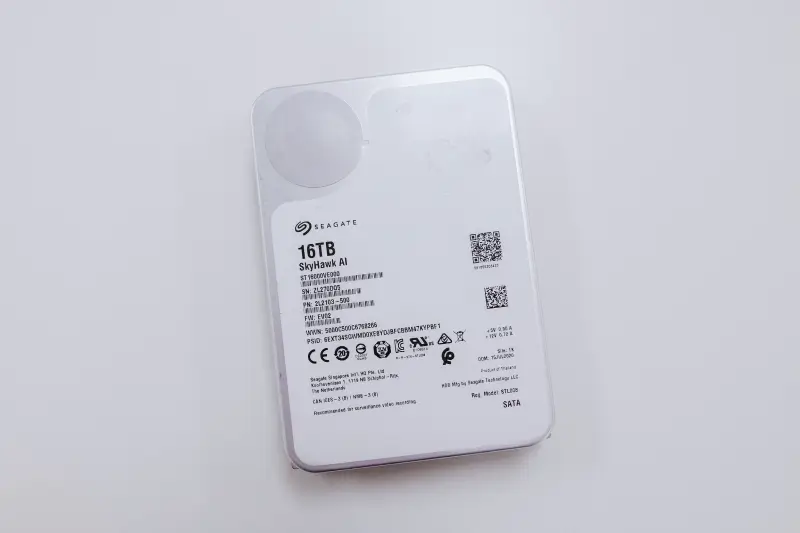
| AT A GLANCE: Seagate SkyHawk AI | |
|---|---|
| Form Factor | 3.5-inch |
| Capacities | 8 TB, 10 TB, 12 TB, 16 TB, 20 TB, 24 TB |
| Cache Size | 256 MB, 512 MB |
| Interface | SATA III |
| RPM | 7200 |
| Warranty | 5-Year Limited |
| Pros |
|
| Cons |
|
Why We Recommend It:
The Seagate SkyHawk AI is purpose-built to capture video from dozens of cameras without dropping frames. The hard drive’s unique firmware ensures smooth recording and playback for surveillance systems or AI-powered engines. Its modern properties and outstanding endurance allow the device to handle a high volume of read and write operations. The SkyHawk AI maintains the same workload rate limit as Seagate’s IronWolf Pro and robust warranty with data recovery coverage.
Alternate Choice: WD Purple
The WD Purple is great for users who do not need to capture video around the clock or process footage with GPUs.
How We Chose Our Picks
These selections reflect our assessment of hard drives currently on the market. While some companies are partners, these relationships did not determine our recommendations. In addition, we do not earn a commission or referral fee for any of the products linked in this guide.
The listed hard drives represent the choices our staff would make if they were shopping for a disk today. We reached these decisions based on our expertise in storage technology and experience with retrieving data following hard drive failure.
Secure Data Recovery is the leader in hard drive recovery. Since 2007, our specialists have restored files from thousands of failed hard drives while offering free quotes and a No Data, No Recovery Fee guarantee.

